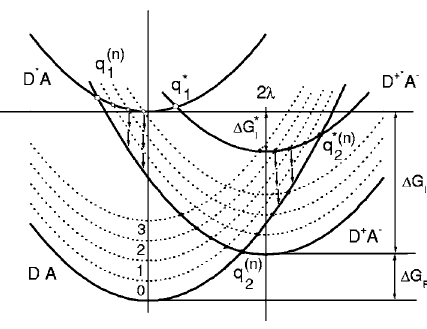-
Hot recombination of photogenerated ion pairs
V. Gladkikh, A.I. Burshtein, S.V. Feskov, A.I. Ivanov and E. Vauthey
Journal of Chemical Physics, 123 (24) (2005), p244510-244510


DOI:10.1063/1.2140279 | unige:3617 | Abstract | Article HTML | Article PDF

The recombination dynamics of ion pairs generated upon electron transfer quenching of perylene in the first singlet excited state by tetracyanoethylene in acetonitrile is quantitatively described by the extended unified theory of photoionization/recombination. The extension incorporates the hot recombination of the ion pair passing through the level-crossing point during its diffusive motion along the reaction coordinate down to the equilibrium state. The ultrafast hot recombination vastly reduces the yield of equilibrated ion pairs subjected to subsequent thermal charge recombination and separation into free ions. The relatively successful fit of the theory to the experimentally measured kinetics of ion accumulation/recombination and free ion yield represents a firm justification of hot recombination of about 90% of primary generated ion pairs.